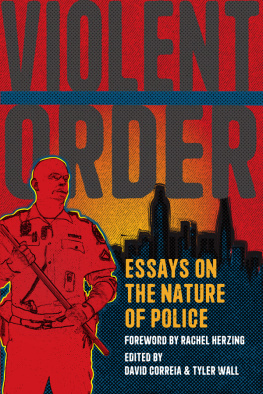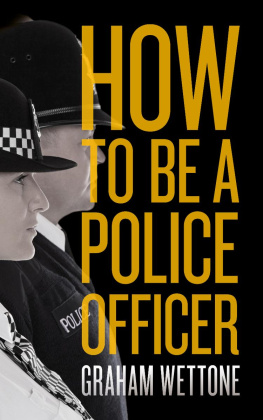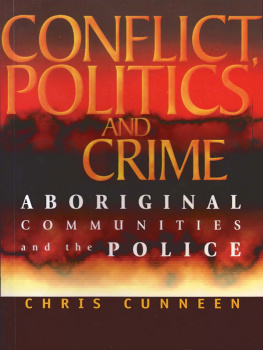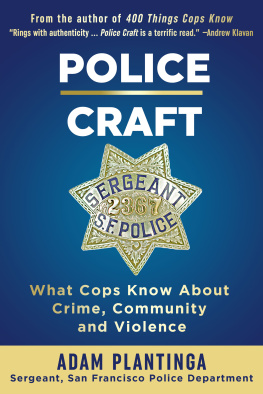RACIALIZED POLICING
RACIALIZED POLICING
ABORIGINAL PEOPLES ENCOUNTERS WITH THE POLICE
ELIZABETH COMACK
FERNWOOD PUBLISHING HALIFAX & WINNIPEG
Copyright 2012 Elizabeth Comack
All rights reserved. No part of this book may be reproduced or transmitted in
any form by any means without permission in writing from the publisher,
except by a reviewer, who may quote brief passages in a review.
Editing: Robert Clarke
Cover art: Jackie Traverse
Cover design: John van der Woude
eBook development: WildElement.ca
Printed and bound in Canada by Hignell Book Printing
Published in Canada by Fernwood Publishing
32 Oceanvista Lane, Black Point, Nova Scotia, B0J 1B0
and 748 Broadway Avenue, Winnipeg, Manitoba, R3G 0X3
www.fernwoodpublishing.ca
Fernwood Publishing Company Limited gratefully acknowledges the financial support
of the Government of Canada through the Canada Book Fund and the Canada Council
for the Arts, the Nova Scotia Department of Communities, Culture and Heritage, the Manitoba Arts Council, the Manitoba Department of Culture, Heritage and Tourism under the
Manitoba Publishers Marketing Assistance Program and the Province of Manitoba,
through the Book Publishing Tax Credit, for our publishing program.





Library and Archives Canada Cataloguing in Publication
Comack, Elizabeth, 1952-
Racialized policing : aboriginal peoples encounters with
the police / Elizabeth Comack.
Includes bibliographical references.
ISBN 978-1-55266-475-9
1. Racial profiling in law enforcement--Canada.
2. Police-community relations--Canada. 3. Native
peoples--Canada. 4. Police--Canada. 5. Racism--Canada.
I. Title.
HV7936.R3C66 2012 363.230897071 C2011-908400-7
CONTENTS
FOREWORD
Racism is a difficult concept to swallow in the twenty-first century in Canada. Racism is at the heart of everyday life for those who are victims of it, and yet it exists as a preposterous taboo from societys past to those who unwittingly perpetuate it. This book delves deep into the psyche of societys attitudes towards racism, towards the racialization of issues, social structures, and, importantly, of the police.
While exploring and analyzing interactions between the police and people of colour in Canada, Elizabeth Comack makes excellent use of statistical data to provide the reader with an insightful and informative backdrop for an understanding of racism. It is far too easy for the public, police, lawyers, prosecutors, and judges to place unmoving faith in the system of justice, particularly when we believe we have rights at our disposal, as guaranteed by the Canadian Charter of Rights and Freedoms. It is possible, on first glance, to believe that fairness and equality go hand in hand with justice and law enforcement, and it would be remarkable and wondrous if such a system did indeed exist. This book exposes the human element of justice, the attitudes and subconscious generalizations that culminate in differential justice, differential treatment, and the imbalance of socio-economic and criminal circumstances between peoples of Canada. The normalization of abuse leads to less tolerance, less recognition, and more scorn against those who try to assert any issue with the status quo.
Whether the abuse is racism, sexism, or discrimination on any other abhorrent ground, it takes a leap of faith to make the right connections between these and the behaviours of the police and, further still, courage to expose it. This is a task that we are all challenged with if we value the aspiration of a free and democratic society.
Donald E. Worme, Q.C., IPC
November 2011, Saskatoon
PREFACE AND ACKNOWLEDGEMENTS
The impetus for this book came from two sources. One was a study I conducted in 2008 and 2009 in collaboration with Nahanni Fontaine, justice director for the Southern Chiefs Organization ( SCO ). The study was one of several I carried out as part of a larger project funded by a Social Sciences and Humanities/Community University Research Alliance ( SSHRC / CURA ) grant entitled Transforming Aboriginal and Inner-city Communities, undertaken by the Manitoba Research Alliance < manitobaresearchalliance-tiac.ca />. My previous research on social justice issues, in combination with the work that Nahanni was doing as the SCO Justice Director, led us to see a pressing need to document Aboriginal peoples encounters with the police with the aim of producing a collective narrative about those experiences. By publicizing the study through posters at Aboriginal organizations and an announcement on an Aboriginal radio station, we hoped to secure twenty-four interviews. Phone calls came quickly to the SCO office and my university number, and we began scheduling interviews. As it happened, the first interview occurred in June 2008 on the opening day of the Matthew Dumas inquest, which became the second impetus for the book.
Nahanni had been actively involved in supporting Matthews family after he was tragically shot and killed by a Winnipeg police officer in January 2005. She continued that support through the course of the two-week-long inquest. I also sat through most of the proceedings, and it became evident that the inquest would not address fundamental issues relating to the impact of race and racism on policing. Indeed, in his opening statement inquest counsel Robert Tapper said that race had nothing to do with this. As with most legal proceedings, the focus of the Dumas inquest was on individual actions and behaviours, with the result that Matthew was held responsible for his own death. That was just not good enough the institutional and organizational nature of the policing of Winnipegs inner-city communities, home to so many Aboriginal people, had to be brought into view.
When the Dumas inquest came to a close, Nahanni and I proceeded with our study. The interest of people in telling about their experiences with the police was beyond our expectations. We ended up with seventy-eight interviews and could have done even more but decided we had ample information for the study. The issue then became how best to honour the participants and their stories. We debated whether to follow our initial plan of writing up a research report, but decided on a book instead. A book would give us the space to present our findings in detail and would enable us to locate the experiences relayed to us by participants as well as the death of Matthew Dumas in their broader context, including the historical role of policing in the colonial project and how relations between racialized groups and the police have played out in other parts of Canada. Although our plan was to write a co-authored book, Nahanni ended up taking on a new job with the Manitoba government as a Special Advisor on Aboriginal Womens Issues for the cabinets Aboriginal Issues Committee. So her time was limited. Fortunately, I was given an administrative leave in January 2011 from my position at the University of Manitoba, which afforded me the time to spend on the book.












